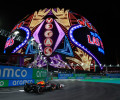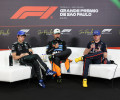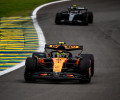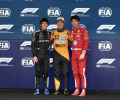F1 - Clear: "It just seems to be a very well-behaved car in all areas"
Transcript of the part two of the Friday Press Conference organised by the FIA for the 2017 Azerbaijan Grand Prix
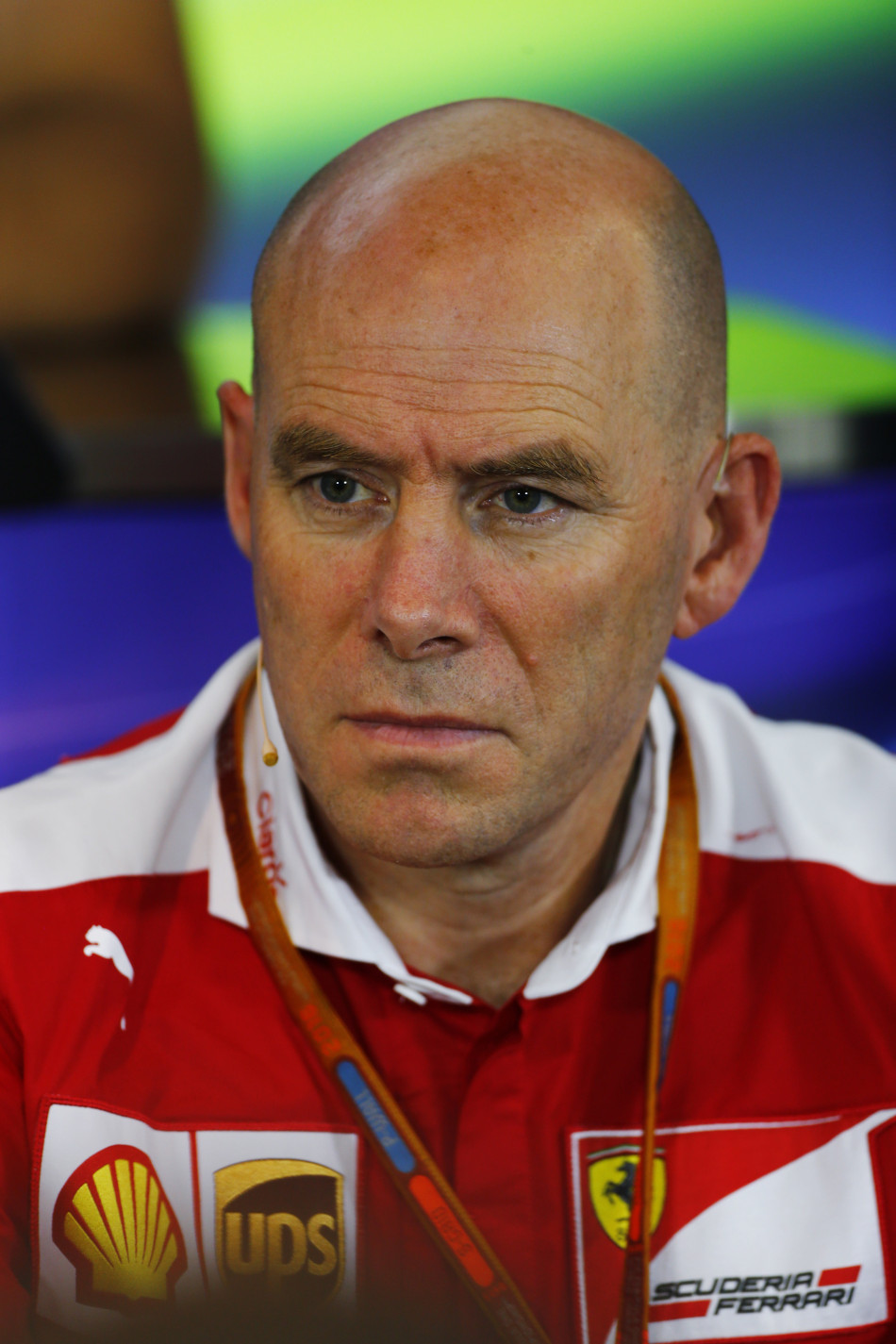
PART TWO
TEAM REPRESENTATIVES: Jock CLEAR (Ferrari), Rob SMEDLEY (Williams), Beat ZEHNDER (Sauber)
Q: Jock, can we start by talking about the car? What’s the standout characteristic of the SF70H?
Jock CLEAR: I think we could say that the standout characteristic is that there is no standout characteristic. It just seems to be a very well-behaved car in all areas. The drivers are certainly giving us good feedback in all conditions, all circuits: slow speed, high speed, medium speed. So, it’s a very benign car, let’s say.
Q: Is it bringing the best out of both Kimi and Sebastian?
JC: I think so. I think they’re both very happy with the feel they have for it. For getting into the car. Certainly, drivers like to have a car they feel they can attack, especially in qualifying: if they feel they can attack a qualifying lap, and have confidence in the car, and I think from day one – day zero in this car in pre-season – both of the drivers have said that it just gives them a lot of confidence when they’re in the car.
Q: And it’s day one here in Baku. How do you assess your pace so far this weekend? Fourth and fifth this afternoon. Sebastian in particular looked very quick in his long run…
JC: Yeah, I think Fridays are notoriously difficult to read the exact picture from and I think we’ve all understood that here in Baku with a street circuit that’s taking a while to clean up and a very tricky grip level, getting a clean lap certainly on those short runs, on ‘low-fuel’ was very difficult for people – so I don’t think the ultimate lap times you see there are particularly representative for many of the cars. I think they all feel they could have got a better lap in there. Perhaps more representative is the long-run pace and, yeah, we’re very comfortable with where we’re at. Again the car felt good and it’s behaving and everything’s under control, so we’re happy with today.
Q: And looking specifically at your battle with Mercedes this year, on a day when both you and them are on song – who has the faster car?
JC: I think that’s impossible to say. I was just saying to some of the journalists outside, it hangs on tiny margins and I think when you’re spending 1m20s going at over 200km/h around a circuit, those tiny margins can be anywhere at any time, and I think we both have cars that are very, very well-matched in most conditions and we’ve got four very, very good drivers in the Mercedes and the Ferrari and actually, on any given day, any of them are capable of putting it on the front row and putting it on pole. The races we’ve seen so far, again they swing on very fine margins of exactly what sort of tyre degradation you can get out of the first qualifying set, or how well you can work the Option tyre, and that makes the difference. And it is tiny margins.
Q: Beat, the last few years have been difficult for Sauber and just when some stability seemed to be emerging it’s all change again. Can you give us a picture from inside the team about what’s going on?
Beat ZEHNDER: No, I cannot, no. You’ve seen the official press statement from Mr Picci and it seems that Mr Picci and Mrs Kaltenborn had different views how to operate the company. We shouldn’t forget that it’s not only a race team, it’s a home team as well with 350 people or so, but I cannot give you more information because I’m not actively involved in that decision.
Q: So who is running the show this weekend in Azerbaijan?
BZ: We’ve been – Jorg Zander, the technical director and myself – we’ve been entrusted to run the operation of the team this weekend but this is only temporary. It doesn’t change a lot for us because our job is to have two cars running as quickly as possible around the circuit and for me it’s a little bit more media work.
Q: When can we expect news about a new team principal?
BZ: I hope soon. We were talking to some candidates and I hope we can announce it sooner rather than later.
Q: OK, on a different note, have you started with Honda yet? It was announced a couple of months ago that you are going to work with them next year. Have you had engineers go to Japan and vice versa?
BZ: Yeah of course. We have started with the project and there is an exchange of information on the logistical side, on the set-up side and the garages. We have to organise computers and IT stuff and things like this so the work has started, yes.
Q: Rob, there are changes at Sauber, there have been changes at Williams this year as well, notably Paddy Lowe coming in as the technical chief. Can you just explain the impact he’s had on the team, any new processes he’s brought in?
Rob SMEDLEY: Well, it’s been positive, it’s definitely been positive. Paddy comes with a great pedigree of working in teams that, if they weren’t winning, they were certainly expected to win for the past probably about 30 years. He’s got 30 years of experience. We were adding up between us that we’ve got 50 years of experience, but it’s a bit more biased towards him so he’s got the 30, I’ve got the 20. But it’s been really really positive. He’s a very collaborative guy, he’s super intelligent, obviously and he has a great deal of experience and it’s just about him instilling that culture into the team of how to win really. That’s probably one of the biggest things that we need to pick up on at Williams is not only that we want to win – that it’s implicit. If you take 60 people around the world 21 times a year you want to win, of course you want to win but it’s how to win and then it’s putting those processes in place and you can’t really put a timeline on it – or it’s difficult to put a timeline on it but certainly we’re initiating those processes, we’re starting them or they’ve already started, a lot of them. And then it’s when and how those processes bear fruit. Some of them will immediately be very visible to the outside and some of them less so. Formula One is very much about marginal gains and it’s just about the marginal gains that we need to make now but he’s been very positive with the team, a real good breath of fresh air.
Q: OK, so marginal gains there but also huge gains it seems for Lance Stroll. It’s amazing what a couple of points can do, him finishing ninth in Montreal last time out, sixth fastest in second practice here in Baku this afternoon. It seems like he’s got the monkey off his back.
RS: Yeah, possibly. For younger drivers is predominantly about confidence. Once they start to get that confidence then they get into a virtuous circle if you like and I think within the team, certainly the more senior members of the team, it’s always been apparent that the talent is there and we have been making progress but it’s just that that progress is not always visible to the outside world. You’ve got a guy on the other side of the garage who’s got 16 years of experience, who was one point away from being a World Champion, he’s nobody’s fool. He’s one of the quickest guys in Formula One still and you’re being measured against him every other weekend and it’s tough because Formula One cars – especially this generation of Formula One cars – they’re generally quite difficult to drive. I think all of the drivers will attest to that and it’s just about acclimatising yourself in this environment: in the car, in the actual environment, because everything that you’ve done before, including Formula Three in Lance’s case, is just a huge huge step away from Formula One. There’s Formula One and there’s everything else in terms of how difficult it is. So we’ve got to expect that it’s going to take some time, he’s going to take some time to acclimatise to it and he is doing... he’s making progress from Australia to practice today, he’s made progress. And as I said, some of that’s visible to the outside world and some of it isn’t but certainly what we saw in Canada was visible to the outside world and that helped.
Q: Does he seem more relaxed this weekend?
RS: Definitely, I think he gets more and more relaxed... more and more comfortable probably is a better way of putting it, as the events go on and of course he would. The first time you walk in the paddock in Australia as an 18-year old rookie, that’s difficult. I wouldn’t like to have walked in as an 18-year old engineer – thankfully I never did – but certainly as an 18-year old driver, I think that must be hugely difficult with all the pressures that not only go on inside the car but outside the car as well and he’s just got more and more comfortable, more and more comfortable, more and more relaxed and more and more confident and with that, the results start coming.
Q: And just a word on your pace this weekend; what do you think you can achieve?
RS: Yeah, it would be – for where we are at the minute – it would nice to be the fourth quickest car, I think that’s got to be our target for 2017 in Azerbaijan, at least. I think Ferrari and Mercedes are having their fight out at the front and hopefully that’s going to be another good one this weekend. Red Bull are probably – with the development that they’re putting on their car – are a little bit far in front but I would like to see a good fight between us and Force India. Certainly Force India appear to have their car hooked up quite well around here as they did last year as well so that’s going to be quite a fight for us but we’ve got two good drivers, one who’s emerging as a very good driver in the car and hopefully we can have a good fight with them.
Q: Jock, do you feel that Red Bull are in the mix this weekend? Is their pace genuine?
JC: Well yeah, you only have to look at today and the lap times you see at the top of the sheets today are not one-offs. As I say, FP1, FP2 are generally not a true reflection on where things end up on a Saturday and a Sunday but if you pick through the details of it, you can clearly see the cars that are hooked up, as Rob says, and the Force India is certainly one of them and Red Bull is certainly one of them and indeed the Williams looked quite quick today as well so there’s a number of cars at the front today.
QUESTIONS FROM THE FLOOR
Q: (Ben Edwards – Channel 4) Jock and Rob, from an engineering point of view, we saw a lot of cars going off today. Clearly the demands of the track were very particular and the tyres perhaps weren’t working. Can you just talk us through the difficulties of getting through today and what you see improving tomorrow as the track rubbers in?
Who’s first, Jock?
RS: Old Jock has more experience.
BZ: For twenty years.
RS: No, no, he’s more got experience of cars going off!
JC: I think you’ve got a street circuit that’s obviously very dirty to start with and taking time to clean up. We saw a huge amount of track evolution last year and as such the grip level is low but as we’ve seen a number of times this year, getting warm-up certainly in the front tyres is really tough and that’s always a challenge in qualifying but certainly today it’s been very challenging to get some temperature in those front tyres. All the time there’s no grip, you don’t get any grip, you can’t brake late, you can’t get any energy in the tyres and when they don’t get hot they don’t have any grip so you’re in this vicious cycle of not being able to get the fronts to work so to speak and that’s certainly what our drivers were reporting early on in their runs until you get into a good six, seven, eight lap run where the tyres starting to get some heat in them. It is all about tyre temperature and that’s been the story of many many qualifyings this year so far and all you’re seeing today is a manifestation of that issue really, on a track that’s very dirty. I think it will be a lot grippier tomorrow and even grippier again on Sunday, so less issues, I think.
RS: I think Jock’s explained it very eloquently. I think what possibly exaggerates it is the run-offs here. The run-offs are quite narrow and you can’t spin turn the car so when a driver does go off, as Jock says, they lock the inside front and then they’ve got to bail out at that point. You can’t try and make the corner because there’s a wall on the other side so you have to bail out and go straight on and once you get down the escape road it’s then a bit of a chore to get out because they’ve got to reverse out, so you saw almost every single driver today using their reverse and that just takes time and double waved yellows come out and because of that, it’s the vicious circle that I think Jock mentioned which is that then the drivers are doing slower laps and later on, very quickly after the track will go green but then it happens again because people have lost tyre temperature so it is pretty much as Jock said, just about tyre temperature.

 Facebook
Facebook Twitter
Twitter